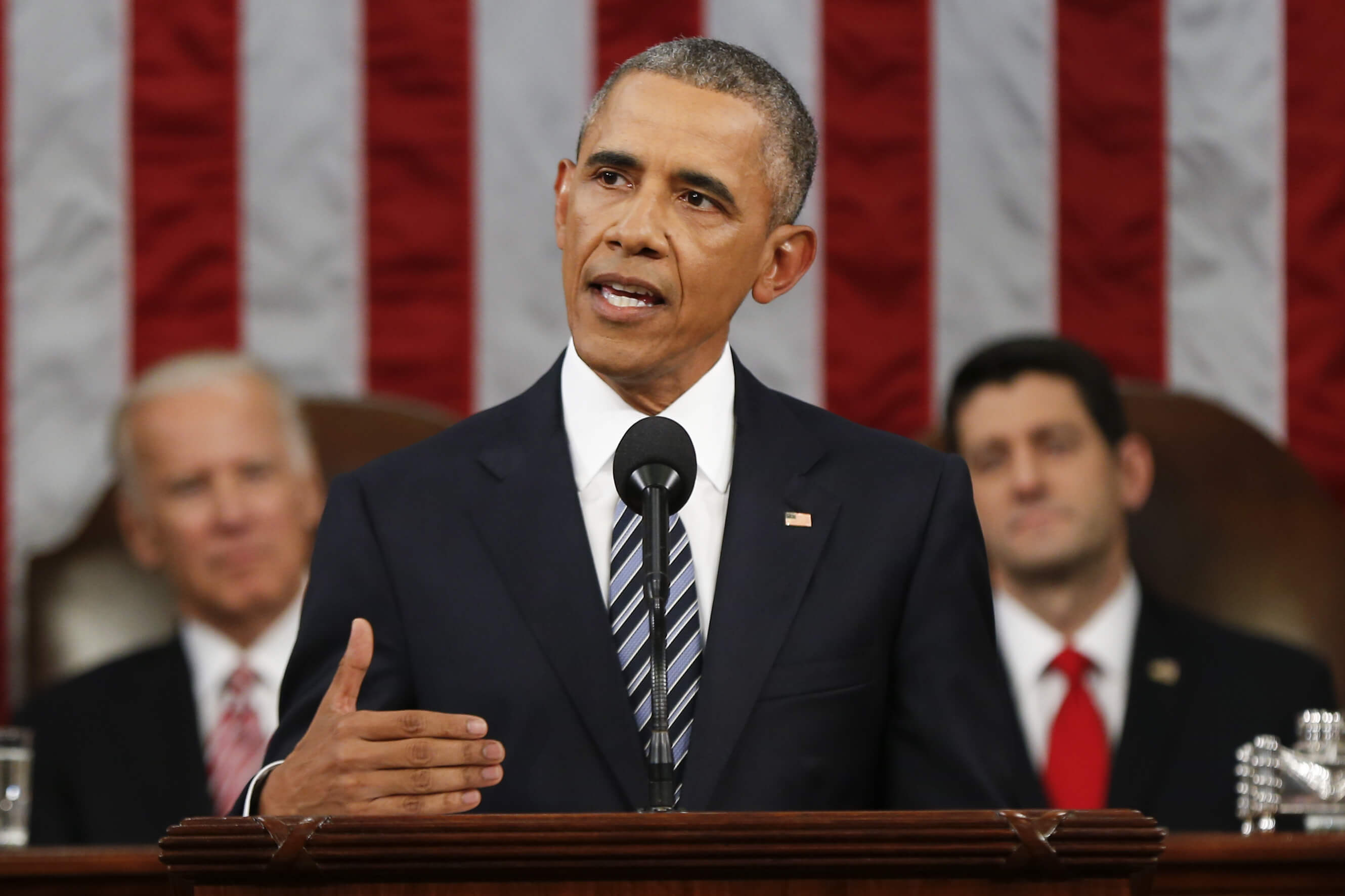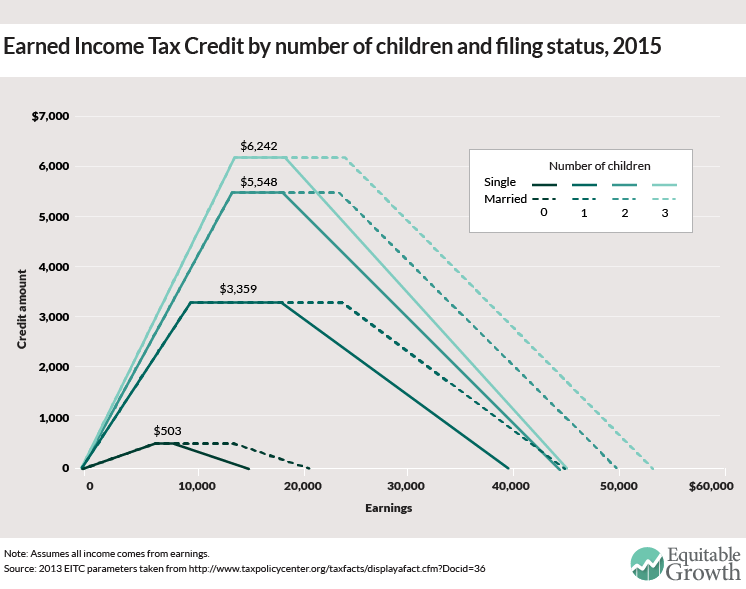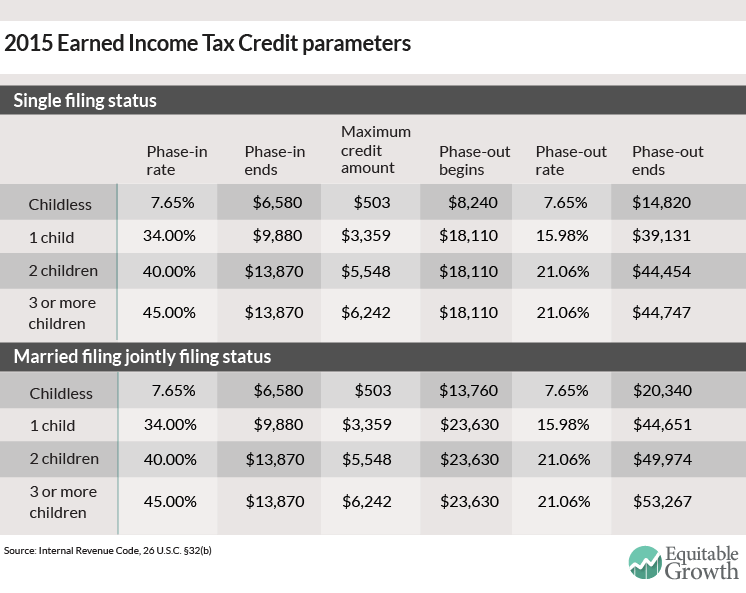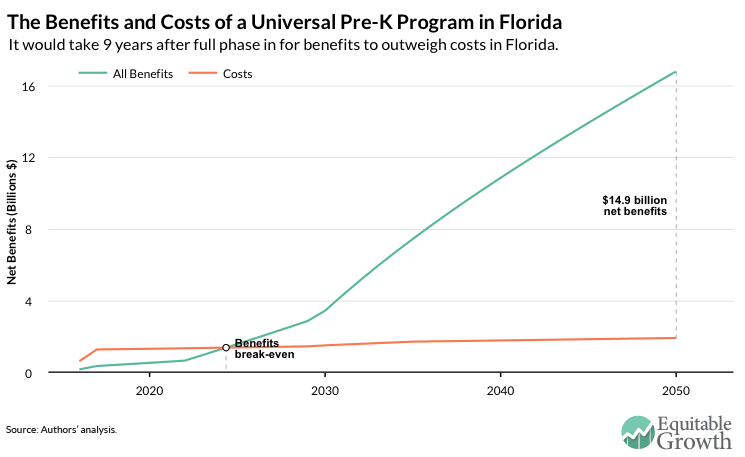 Today, Equitable Growth kicks off “Equitable Growth in Conversation”—a recurring series where we’ll talk with economists and other social scientists to help us better understand whether and how economic inequality affects economic growth and stability in particular ways.
Today, Equitable Growth kicks off “Equitable Growth in Conversation”—a recurring series where we’ll talk with economists and other social scientists to help us better understand whether and how economic inequality affects economic growth and stability in particular ways.
In this first installment, Heather Boushey, Executive Director and Chief Economist here at Equitable Growth, interviews renowned economist and former U.S. Treasury Secretary Lawrence H. Summers. The two dig into secular stagnation—what it is, what problems it creates, and the issues for policymaking—as well as how inequality plays a role in the phenomenon.
Read their conversation below.
Heather Boushey: You’ve been talking a lot about secular stagnation. That’s what we want to dig into, and in particular we want to talk about what it is, what problems it creates, and what the issues are for policymaking. But then we want to talk about how you see inequality playing a role in secular stagnation. I know in a couple of pieces, you’ve referenced inequality playing a role, so that’s what we want to take a close look at today.
To open up this interview, can you briefly sketch out what secular stagnation is?
Larry Summers: Secular stagnation, as I use the term, refers—and I think this was the essence of Alvin Hansen’s argument in the 1930s—to a situation in which there’s a chronic excess of savings, desired savings, relative to investment in an economy—in an individual economy or in the global economy.
The consequence is downwards pressure on real interest rates, a weakness in demand leading to slow growth, and leading to sub-target inflation. In a situation of secular stagnation, there will be normal fluctuations, centered around a relatively low level of performance. And there will be a tendency for those moments of rapid growth to be financially unsustainable because they’re based on unsustainable levels of borrowing and, perhaps, of asset prices.
HB: So what do you think are the key problems that this creates for policymakers?
LS: Look at the global economy. Look at the industrialized world today. If you look across the United States, Europe, and Japan, inflation is expected to be less than 1 percent over the next 10 years, and real interest rates are expected to be below zero. And that’s over a 10-year period.
That’s a market judgment—and it’s a judgment that markets have had for quite some time now—that economic performance is going to disappoint substantially in the industrial world. And the key to it is that there’s a lack of demand. That leads ultimately to reduction in supply potential, as lack of demand inhibits investments and leads to more unemployment and labor force withdrawal through hysteresis effects.
But if you see a tendency toward “low-flation” and deflation, and you see sluggish economic growth, and you see that in progress for a long period of time, you have to think that something’s going wrong on the demand side of the economy.
HB: So let’s set aside the politics if we can, which I know is not a rational thing to do. But let’s start with what you think we need to be thinking about. For policymakers—both on the fiscal and monetary side, but let’s start on the fiscal—what do you think needs to get done that would address these kinds of issues? Is it all demand management?
LS: The least rational political cliche in economics is the idea that, because in downturns people and businesses are tightening their belts, government should as well.
HB: I believe President Obama said that when you were working for him.
LS: I think it was after I was working for him, but he did say it. He did say it and I regretted it when he said it. Virtually every American president has said some version of that at some time or another. The reality is that it’s government’s responsibility to be countercyclical—that when private saving is substantially exceeding private investment, that is precisely when government should be borrowing and investing.
This is a moment when the United States can borrow money at less than 3 percent for 30 years, in a currency we print ourselves. It is a moment when materials costs are extraordinarily low. It is a moment when construction unemployment rates remain high.
Has there ever been a better moment to fix LaGuardia or Kennedy Airport? It is crazy that at a moment like this, the United States has the lowest rate of federal infrastructure investment, relative to the economy, than we’ve had since 1947. And on a net basis—that is, taking into account depreciation—we’re essentially not investing at all.
So there is a compelling case, in my view, for expanded public investment. Even the International Monetary Fund, hardly a group of radical socialists, has recognized that in situations like the present one, where the economy is close to being in a liquidity trap, the likelihood is that increased public investments will, over time, reduce rather than increase debt-to-GDP ratios, as they call forth increased economic growth.
I yield to no one, not Pete Peterson, not the Concord Coalition, in my concern for the well-being of my children’s generation and future generations. It’s just that I think a deferred maintenance liability of trillions of dollars compounds at a far higher rate than the interest rate at which the United States is now able to borrow. So addressing that deferred maintenance liability is actually reducing the financial burden that we will place on future generations.
HB: So for the deficit hawk that’s in Congress, what do you think is the best illustration of the effectiveness of the policy agenda that you just outlined? If you were to show one chart, one figure, one country example, what would you point to that you think really hammers that home for the non-economist—somebody who’s a politician?
LS: You know, I’m not sure. Judging by the decisions Congress has made on infrastructure, I’m not sure those of us on this side of the argument have been successful. I suppose I would show what’s happened, show the growing deferred maintenance burden that we are incurring as a country, and I would show the available evidence, which suggests that when you defer maintenance, you can raise its total costs by a factor of two or more.
I do think that some part of the skepticism about public investment comes from a sense that the government doesn’t always do it as well as it could. There’s a bridge across the Charles River right near Harvard Square, right near my office. The bridge was constructed around 1915, in 10 months. It’s now in its 50th month of being repaired.
So I think there are legitimate concerns about how public investment projects are executed. And I think there is a tendency for some macroeconomists and some progressives, in their enthusiasm for public investment, to lose sight of valid concerns about the competence and efficiency with which public investment projects are executed.
HB: Yes, which poses a lot of political problems.
LS: Yes.
HB: That might be an interesting segue into the next set of questions. I want to come back to monetary policy, but I want to move now to thinking about the role of inequality.
What role do you think inequality plays in the problem of secular stagnation? And my follow-up question to that: There are a variety of dimensions in inequality that we could think about. I don’t want to limit you to a particular dimension, but I am going to ask you if you think there are other dimensions than whatever you mentioned in the first part of the answer.
LS: You know, I think there’s a broad issue. When I went to graduate school in the 1970s, the prevailing view among economists, captured by Art Okun’s book “Equality Versus Efficiency: The Big Tradeoff,” was that equality and efficiency were both desirable, but they were likely to trade off—that more progressive taxation would achieve more equality but would inevitably in some way distort economic choices and, so, reduce efficiency, for example.
I believe there are still many areas in which one does have to trade off equality versus efficiency. But I also believe there are many areas in which it’s possible to reform policy to promote both economic efficiency and equality. One such area is policy to mitigate secular stagnation by promoting demand at times when there is slack in the use of resources.
Recall that I defined secular stagnation as having at its essence an excess of savings over investment, desired saving over desired investment. There are many reasons for that. Some of them have to do, for example, with reduced investment demand because so much more capital can be purchased with fewer dollars. I think of the fact that my iPad has more computing power than a Cray supercomputer did when Bill Clinton came into office in 1993.
One aspect of that excess in saving over investments is that rising inequality has operated to reduce spending. We are fairly confident that what economists call the “marginal propensity to consume” of those with high incomes is less than the marginal propensity to consume of those with middle incomes.
And so the combination of rising inequality in the distribution of income across income levels and a shift in inequality toward the higher profit share slows economic growth. In normal times, such a change might be offset by easier monetary policy. But in the current environment, where interest rates are very close to the zero lower bound, the capacity for that kind of offset is greatly attenuated.
There’s another aspect of the connection between secular stagnation and inequality that bears emphasis. Experience suggests that in an economy where there are more workers seeking jobs than there are jobs seeking workers, the power is on the employer side, and workers do much less well. A tight economy, where employers are seeking workers, shifts the balance of power toward workers and leads to higher pay and better benefits. That, in turn, leads to more spending being injected into the economy, which supports further economic growth.
And so, as Keynes recognized when he wrote to FDR in the late 1930s urging the importance of wage increases, measures that strengthen workers’ capacity to earn income by increasing spending power can promote both equality and strengthen the economic performance of the country.
HB: A number of economists are now talking about the rise of inter-firm inequality—that it’s not necessarily just a gap between the typical worker and all bosses, but that some firms are pulling further and further away. Do you have any sense that that might be playing any role in the dynamics that you just mentioned?
LS: I’m familiar with that argument, but I don’t yet have a view. I have a concern that we may be seeing some increases in monopoly power. That, because of overly rigorous protection of intellectual property, for example, because of the rise of industries where there are very important network or first mover advantages, we may be seeing more monopoly power. And monopoly power exacerbates secular stagnation in two respects.
On the one hand, it means more income going to groups that are likely to have a high marginal propensity to save. On the other hand, it means less investment demand because monopolists have a desire to constrict supply.
HB: So I just have two questions left. We talked a lot about problems. We talked a lot about the role of inequality. We talked about secular stagnation. Just to remind us all of what we covered.
The big questions that I have are: What solutions should policymakers pursue, above and beyond the things you already mentioned, around infrastructure investment? And what, importantly, do they need to know to help them make those decisions? What I’m looking for is what solutions we should pursue, and what questions we, as an organization, should be encouraging researchers to ask in order to help inform those decisions.
LS: Let me answer them in the opposite order.
HB: OK.
LS: I think we need more research on the links between inequality and spending. It’s an area where there’s a lot of talk and relatively little hard data. In particular, there was a previous generation of research on the impact of a profit share of corporate-retained earnings on aggregate levels of savings. But that work has not been extended in recent years.
There’s a great concern on the part of progressives about mechanisms through which corporations distribute cash, like excessive stock buybacks and dividends. If the alternative is investment, that concern is very understandable. If the concern is cash that is held on corporate balance sheets, then reducing payouts may have the effect of reducing spending and hurting the economy. And I don’t think we understand those aspects of corporate behavior as well as we might think.
In the wake of the financial crisis and the Great Recession, there’s been an entirely appropriate concern with curbing excessive lending and with maintaining prudential standards. But, of course, an inadequate capacity to support lending operates to discourage investments and in turn to exacerbate secular stagnation.
I don’t think we know as much as we should about the determinants of a flow of credit to small business. And I have a particular concern that if we had an excessive flow of credit to housing for many years, we may have an insufficient flow of credit to some who want to buy homes at the present time. And this seems to me to be a valuable area for future inquiry.
An additional area that I have tried to do some work in recently, with Gauti Eggertsson, but where much more needs to be done is the open economy aspect of considering secular stagnation.
Increasingly, the United States is the single engine that is driving large parts of the world economy, and policy measures that lead to a much stronger dollar may have the effect of shifting demand from the United States to the rest of the world in ways that are not fully in our interest. And so, what the appropriate attitude is, for example, toward capital outflows from China, is an issue that I think deserves careful consideration and research.
At the broadest level, the concern with excessively low interest rates in the United States—and the danger that the United States will hit the zero lower bound on interest rates repeatedly in the years ahead—raises the question of what the appropriate public policy posture is toward promoting savings versus promoting investments. For many years, we have seen the promotion of savings as a central objective. Perhaps in an environment of such low returns to savings, and an environment with the shortage of demand, we should be more concerned with promoting demand.
It’s ironic to remember that when Keynes visited the United States during the Second World War, he saw one important virtue of the Social Security system as being that, by making retirement secure, it would support spending—spending that would help to drive the economy forward and avert what might otherwise be a stagnant outcome.
For a whole variety of reasons, those arguments haven’t looked very relevant for most of the last 60 years, but we may be coming into an era when they are increasingly relevant. And so, the question of the right attitude toward savings is one on which I think there is valuable future work to be done.
One critical area is with respect to the relationship between macroeconomic policies and financial stability. The secular stagnation hypothesis raises a possibility that I think needs to be considered much more thoroughly in future research. That possibility is that financial instability is obviously in part a reflection of inadequate regulation. But in a deeper sense, it may be that the structure of the economy has become such that the kinds of flows of credit that are necessary to maintain full employment are inconsistent with financial sustainability.
From that point of view, efforts to contain dangerous credit flows or avoid monetary policies that risk bubbles and asset price inflation may have the very adverse side effect of holding down demand and thereby inhibiting economic growth. If so, there needs to be much more emphasis on structural measures and fiscal measures as tools for maintaining consistently adequate levels of aggregate demand.
There may also be a scope for further research on unconventional aspects of monetary policy. A central concern coming out of the secular stagnation thesis is this: If you look at the experience of economies that are in the mature stage of recovery, and where the unemployment rate has fallen to reasonably low levels, historical experience suggests that the odds of a recession within three years are very high, and the odds of a recession within the next year are certainly not small. Traditionally, the Federal Reserve has lowered interest rates by between 300 and 500 basis points to combat a recession. We are unlikely to have that much room when the next recession comes.
What are the alternative tools? Part of the answer lies in choosing fiscal policy, and I think we need to do more than we normally do to have contingency plans for the use of fiscal policy. But an additional part of the answer, I would submit, will lie in creativity with respect to possible unconventional monetary policy. How much easing can be achieved in a world where quantitative easing has already brought loan rates down to very low levels? What is the full extent to which negative interest rates are or are not a viable economic possibility? What are the toxic side effects in terms of financial stability of easy monetary policies? These are all crucial questions raised by secular stagnation.
HB: Thank you. Those are all great. My last question is, on this policy question around inequality, are there things that policymakers should be thinking about—specifically in the area of non-macro policy—about addressing inequalities that would ultimately be important for macroeconomic stability in ways that perhaps policymakers aren’t thinking about now?
And then, if inequality plays any role in this instability, should we be thinking more about addressing inequality at the top or the bottom and putting it into that larger economic framework for people?
LS: No, as Keynes recognized in the late 1930s, traditional economics of measures to support wages—like stronger collective bargaining or increases in the minimum wage—are quite different in the context of an economy that is demand-constrained compared to one that is not demand-constrained.
And so I think it is an appropriate moment for more active consideration of structural measures that influence inequality. The minimum wage is one such measure. Collective bargaining is another. The appropriate application of regulatory and antitrust policy is yet another that deserves consideration.
I think the agenda of seeking to identify areas within the economy where large rents are being earned and to contain those rents is very worthy of consideration. One needs to also be mindful that one person’s rent can be another person’s incentive. And so I think one needs to consider policy quite carefully in these areas, but I don’t think that issues surrounding rents have received the appropriate amount of attention in recent years.
HB: Well, that’s a great place to end it. This has been wonderful, and I really appreciate your time. Thank you.
LS: Thank you.
This interview has been edited for length and clarity.





